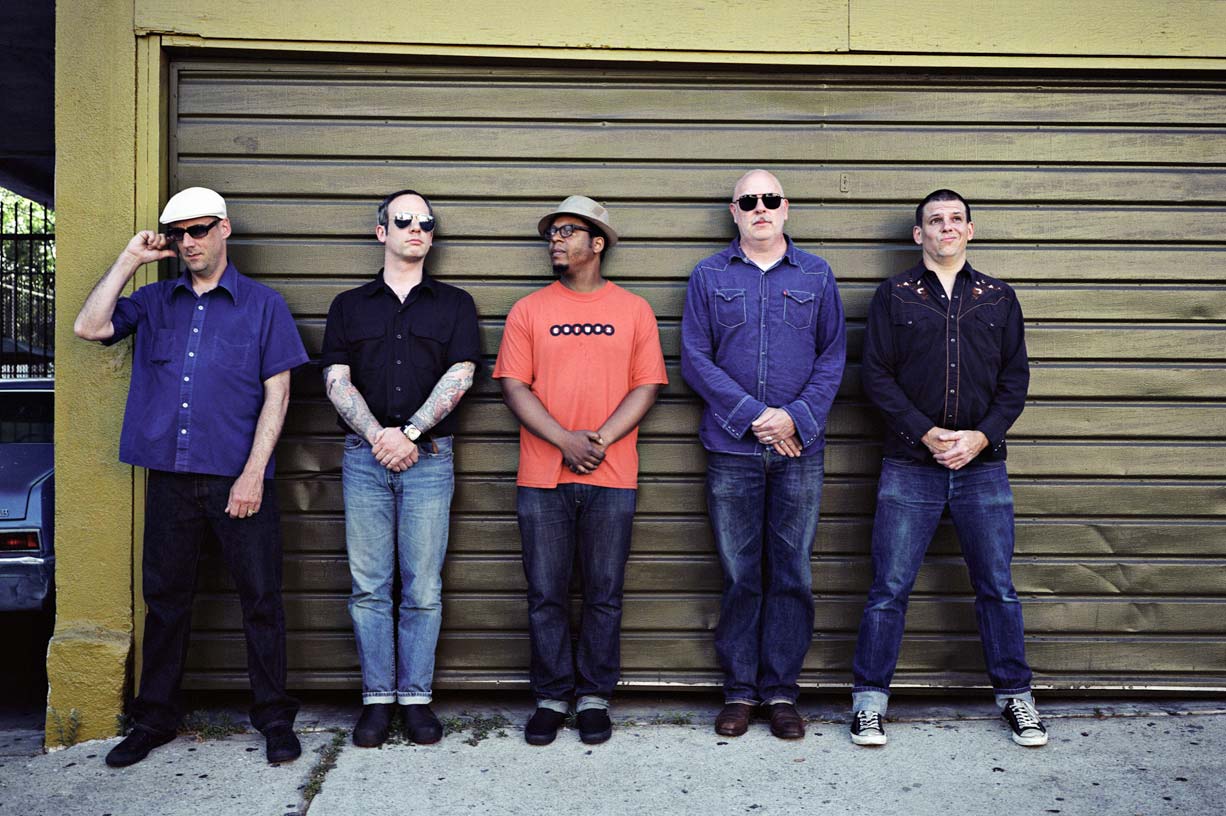“Synergy means behavior of whole systems unpredicted by the separately observed behaviors of any of the system’s separate parts.” – R. Buckminster Fuller
For nearly 20 years, the members of Tortoise have exhibited a synergistic effect on each other, enriching their assorted personal contributions to yield an amorphous, anomalous instrumental quintet.
Slapped with cover-all classifications like post-rock, kraut rock, and indie rock, the band’s creations often are indescribable mid-tempo conglomerations of grooves, harmonies, effects, and rhythms.
Swirling synthesizers and haute harpsichords splash against robust bass lines, dueling drum kits, and jazz-inflected guitar melodies, all while rubbing elbows with elements of dub, electronica, and art rock. Overlapped time signatures and percussive passages abound, as a marimba and vibraphone are incorporated with the aid of the band’s shuffling backline of beat makers.

Much of this stylistic diversity is thanks to the members’ backgrounds and outer interests, which branch out to frenetic free jazz, gentle indie rock, beat-based blippery, and unclassifiable weekly improvisational performances.
Using the studio as an incubator, the five pieces of Tortoise have assimilated these ideas and influences, congealing them into something unrecognizable — something exciting and rare. And it’s been there, the studio, where the group has logged long hours, creating, rearranging, editing, and re-editing the vast majority of its material.
“I think that it’s really interesting how the five of us are able to create this world that is sort of the sum of our influences and ideas,” says multi-instrumentalist John McEntire, whose Soma Electronic Music Studios in Chicago hosts the band’s recordings.
“I don’t know exactly how that works, and I can’t even say specifically that we reference anything in particular while working on [our material]. There’s always stuff floating around in the ether that I think either individually or collectively we maybe reference in an obtuse way.”

“It’s a good mix if you can’t even describe the music,” adds Dan Bitney, a fellow percussionist with multi-instrumental abilities. “Everything has sort of a mutant quality to it where it’s not really obvious. We’ll do something where the composition takes it out of a genre, hopefully.”
That genre-less mentality has always been at the core of Tortoise’s intentions. In the early 1990s, the band was borne from the ashes of a would-be “freelance rhythm section” between percussionist John Herndon and bassist Doug McCombs. As the group added more percussionists like McEntire and Bitney, Herndon was freer to experiment with electronics, sequencing samples and MIDI, and filtering drumbeats.
McCombs’ penchant for rhythmic tightness and harmonic accentuation became a staple of Tortoise’s sound, rooting the group in low-end grooves. Meanwhile, Bitney’s addition accentuated the band’s taste for polyrhythms, which were especially effective on seminal albums Standards (2001) and It’s All Around You (2004). Similarly, McEntire’s dynamic abilities and engineering prowess have been crucial to the band’s dense recordings.
But for all the above-mentioned abilities, Tortoise didn’t fully mature until joined in the late 1990s by jazz guitarist Jeff Parker, whose early love affair with low end and bass grooves attracted him to the band’s rhythmically rooted sounds. “I always hear music from the bottom up,” Parker says, “which is kind of why I was drawn to Tortoise’s music before I was in the band — like, ‘Man, I could get with these guys.’”

